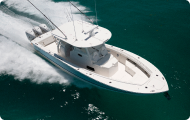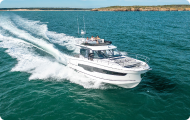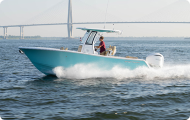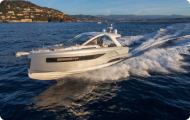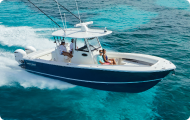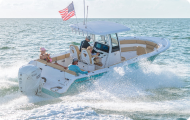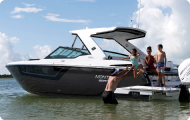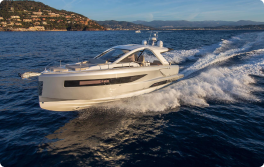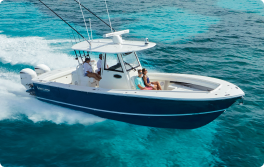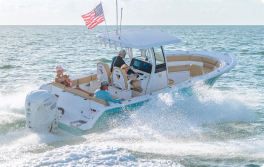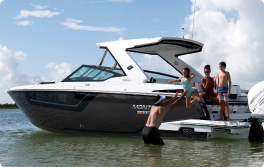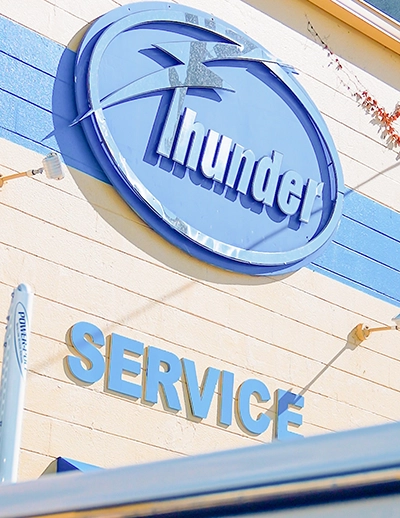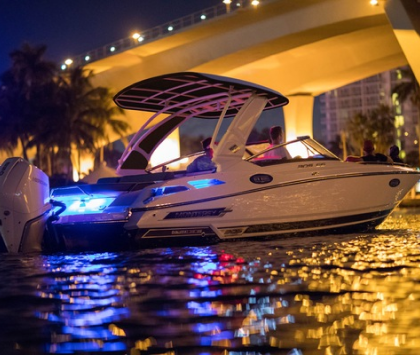We’ve all seen the boat yard’s trusty barge moving boats and get around powered by an old, small outboard engine. They’ll run a long time if treated right.
To keep an outboard engine running to its designed potential, it needs to be properly set up and maintained. Here are some important guidelines for correctly setting up and preserving an outboard’s potential life.
Outboard manufacturers have recommended RPM ranges for their specific models. Top boat manufacturers prop their outboards with size and pitch that allows the boat to run inside the recommended limits.
7 Tips for Peak Performance
Today’s outboards are a big step forward from the units the major outboard makers produced just 10 years ago. Technological advances in manufacturing, new, innovative designs, lower emissions, new metal alloys, and better anti-corrosion coatings have made all brands generally better. However, these machines need to be properly set up and maintained to sustain a life in what is essentially a hostile environment.
To achieve the best performance, boat manufacturers choose propellers with a size and pitch that meet their perceived performance objectives. These are not always the best for outboard longevity.
Things to Consider
1. Get the Top End Right
This is a shockingly common problem. When a boat is over-propped (the propellers have too much pitch), the outboard(s) highest achievable RPM is lower than the manufacturer’s recommended wide-open-throttle RPM, which typically is between 5000 and 6000 RPM.
- a. Common Mistake – When considering a boat with outboards that just barely achieve the recommended RPM range, after adding gear and filling the fuel and water tanks, the engines can no longer reach the recommended top RPM.
b. No harm in running below recommended RPM – Some think if the engines weren’t at or over the recommended top RPM, no harm could be done. Wrong. Over-propping a boat forces the engine to work harder to attain a given RPM, raising combustion temperature and stressing internal parts like rods and bearings.
c. On the flip side – Under-propping a boat and allowing the engine to spin above the manufacturer’s recommended RPM range is just as harmful. Those poor metal parts will be pedaling away furiously as the engine over-revs. Again, the potential for an early engine grave is obvious.
The solution – Change the propeller pitch. The propeller is the one variable which you can easily alter to regulate your boat engine’s wide-open-throttle RPM range, simply by increasing (to lower wide-open RPM) or decreasing (to raise it) pitch. A boater who isn’t sure what the manufacturer’s recommended RPM range is for his or her specific motor? The answer is just a Google away.
Fuel treatments clean the fuel system and ensures your engine is operating at peak performance.
2. It is important to treat fuel.
By now, everyone should know ethanol gas can ruin boat engines, especially thanks to phase separation – the separation of the water in the fuel from the fuel itself. This is more of a problem in boats than cars since gas tends to sit a lot longer in boats.
But even if boaters use their boat with regularity and freshen the supply within a matter of weeks, ethanol can still do damage. Even if there is access to ethanol-free gas, it is still important to use an additive. Partially full fuel tanks on boats are subject to serious condensation, and water tainting the fuel supply has been a problem since well before ethanol was ever introduced into the system.
The potential internal corrosion problems can seriously impair an outboards productive use.
3. Flush After Each Use
Regular freshwater motor flushes are a key to longevity for any kind of marine engine. Freshwater flushes keep the cooling passages clean and open, prevent corrosion in several parts of the engine, and extend the longevity of the water-pump impeller. Make freshwater flushing a habit. Flushing once a month doesn’t work, nor does flushing the engine a day or two after use.
The freshwater flush needs to be built into the daily boating routine—immediately after pulling into the slip, dry storage or driveway, hook the hose up to the outboard and flush according to the outboard manufacturer’s recommendations.
4. Replace Oil and Oil Filters Regularly
Outboard engines run continually at high RPMs, much higher RPMs than cars or trucks. With 4-stroke engines keeping fresh, clean oil in the engine becomes of paramount importance and changing the oil filters each and every time will help keep the oil that much cleaner.
2-stroke engines are much less expensive to maintain because not oil changes and replacing fuel filters is necessary. That is why with outboard engines in high-use applications, 2-stroke engines are much more economical.
Starting an outboard without proper cooling water circulating is tantamount to disaster. Marine engines need water at all times, period. Never start an outboard engine without properly circulating water.
5. Engines Need Coolant Always
It’s fine to run an outboard on land when it has a water supply (via earmuffs or hose fittings) but they should never, ever be dry-started. Not even for a moment or two. The build-up of heat isn’t the only issue at hand. The water-pump impeller needs water for lubrication and with one dry-start of your motor, that impeller can get damaged in a matter of seconds.
A damaged or bent propeller can cause problems such as shaking nuts and bolts loose.
6. Keep the Prop in Good Condition
A damaged or bent propeller isn’t just bad for the engine, it’s bad for the entire boat. The problem is vibration. A bent or damaged prop can cause all kinds of serious vibration, which in turn abuses bearings and seals.
7. Use Your Outboard
Letting an outboard sit idle is actually harmful. Seals shrink up, grease gathers dust, condensation occurs and parts corrode. One of the worst things you can do for any marine engine is to let it go unused for months at a time.
Any time a boat sits for more than a couple of weeks, the owner should start it up and let it idle until it comes up to operating temperature. If you ever need one, this is a great excuse to use your boat.


